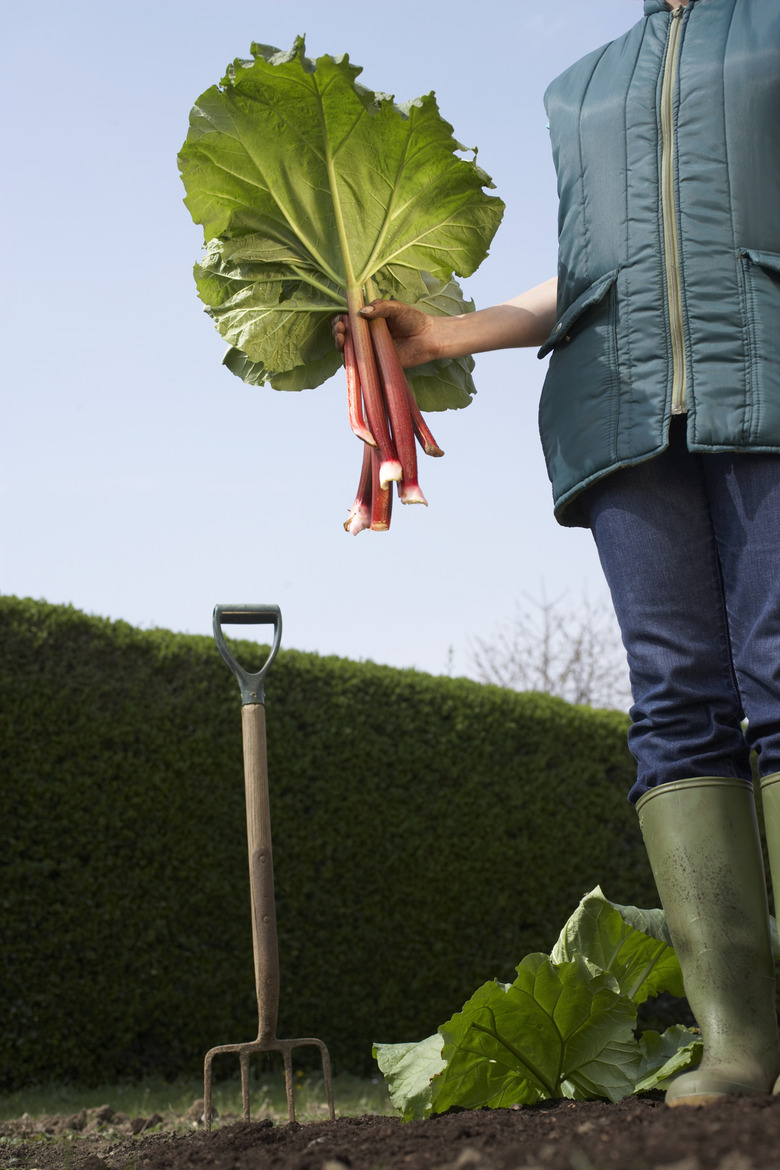Do I Need To Cover My Rhubarb Plant If The Temperature Gets Below Freezing?
Gardeners have been cultivating rhubarb for thousands of years. Rhubarb, Rheum rhabarbarum, grows best in cool weather, but cool weather isn't the same as freezing weather. Cold, below freezing temperatures may damage rhubarb and make it unfit to eat. It may be necessary to protect rhubarb plants if temperatures dip too low.
Growing Temperatures
Rhubarb plants must have winter temperatures that fall below 40 degrees Fahrenheit. Warm temperatures of 75 degrees Fahrenheit are ideal while the plant is producing leafy, new growth. Even when cold, freezing temperatures kill the leaves of the plant, hardy rhubarb roots will survive and create new leaves in the spring. With enough protection and care, rhubarb may be grown up to U.S. Department of Agriculture Plant Hardiness Zone 3, where temperatures fall as low as minus 40 degrees Fahrenheit. New rhubarb plants are created from seed, crowns or division. Seeds may be planted and started indoors up to six weeks before the last spring frost date and transplanted outside after the soil has warmed.
Freezing Temperatures
Rhubarb is a cool-season vegetable and hardy to cold temperatures. Light and moderate freezing temperatures in the low thirties and upper twenties are not likely to cause much damage to rhubarb, but once temperatures dip below 24 degrees Fahrenheit, serious problems could result. Rhubarb stalks that have been damaged by severe frost may be inedible, but new stalks that emerge after the frost will be perfectly safe to eat.
Freeze Protection
An unexpected late or early freeze may ruin rhubarb, but gardeners can protect their plants from sudden temperature changes. Anything that will provide the plants with insulation may be used to protect rhubarb. Plastic, straw, even sheets and blankets may be placed directly over plants to trap heat and guard against freezing temperatures. A large bucket or jug, turned upside-down and placed over the plants, may even be used as a makeshift greenhouse against cold weather. Remove the protection after temperatures rise.
Freezing Damage
Rhubarb leaves are filled with oxalic acid that makes them unfit for consumption. In freezing temperatures that create severe frost, that acid will move from the leaves down into the stalk. Within two or three days, frost-damaged stalks will turn black and limp. When ingested, rhubarb stalks containing oxalic acid will create food poisoning. Harvest and discard any stalks and leaves that have been frost-damaged.
References
- Ohio State University Extension Fact Sheet; Growing Rhubarb in the Home Garden; Marianne Riofrio
- University of Minnesota Extension; Growing Rhubarb and Sorrel in Minnesota Home Gardens; Jill MacKenzie
- The Old Farmer's Almanac: Rhubarb
- The Gazette; What to Do With Frost-Damaged Plants; Cindy Hadish; May 2010
- Iowa State University Extension; Rhubarb Stalks Exposed to Frost Can Become Toxic; John Froehling; April 2007
- University of Illinois Extension; Protecting the Home Vegetable Garden from Spring Frost; April 2009
